History
Beacon Power was founded in Woburn, Massachusetts in 1997 as a subsidiary of SatCon Technology Corporation, a maker of alternative energy management systems. The company went public in 2000. [5] [6] [7] In June 2008, Beacon Power opened new headquarters in Tyngsboro, with financing from Massachusetts state agencies. [4]
In 2009 Beacon received a loan guarantee from the United States Department of Energy (DOE) for $43 million to build a 20-megawatt flywheel power plant in Stephentown, New York. [8] [9] The DOE loan for $43 million was awarded in 2010, with the plant to be online by 2011. It also was awarded $24 million from the DOE for a second flywheel plant. [10]
On 30 October 2011, the company filed for Chapter 11 bankruptcy protection under in the United States bankruptcy court in Delaware. [11] [12] As part of the bankruptcy court proceedings, Beacon Power agreed on November 18 to sell its Stephentown facility to repay the DOE loan.
As of 6 February 2012, Rockland Capital, a private equity firm, bought the plant and most of the company's other assets for $30.5 million. [13] Rockland Capital stated it intended to rehire most of staff and to provide the capital to build a second 20MW plant in Pennsylvania. [14]
On May 1, 2018, the investment arm of RGA Labs acquired the company. [15] The physical assets, the 20 MW NY Facility named Stephentown Spindle and the 20 MW facility [16] in Hazle Township PA were sold to Convergent Energy and Power in 2018. [17] [18]

Stephentown is a town in Rensselaer County, New York, United States. The population was 2,791 at the 2020 census. The town, which was originally Jericho Hallow in the Massachusetts Bay Colony, was renamed for Stephen Van Rensselaer. The town is located in the southeastern corner of the county, and has a sign proclaiming it to be the only Stephentown on Earth.
Southern Company is an American gas and electric utility holding company based in the Southern United States. It is headquartered in Atlanta, Georgia, with executive offices located in Birmingham, Alabama. As of 2021 it is the second largest utility company in the U.S. in terms of customer base. Through its subsidiaries it serves 9 million gas and electric utility customers in 6 states. Southern Company's regulated regional electric utilities serve a 120,000-square-mile (310,000 km2) territory with 27,000 miles (43,000 km) of distribution lines.

Constellation Energy Corporation is an American energy company headquartered in Baltimore, Maryland. The company provides electric power, natural gas, and energy management services. It has approximately two million customers across the continental United States.

FirstEnergy Corp. is a privately owned electric utility headquartered in Akron, Ohio. It was established when Ohio Edison merged with Centerior Energy in 1997. Its subsidiaries and affiliates are involved in the distribution, transmission, and generation of electricity, as well as energy management and other energy-related services. Its ten electric utility operating companies comprise one of the United States' largest investor-owned utilities, based on serving 6 million customers within a 65,000-square-mile (170,000 km2) area of Ohio, Pennsylvania, West Virginia, Virginia, Maryland, New Jersey, and New York. Its generation subsidiaries control more than 16,000 megawatts of capacity, and its distribution lines span over 194,000 miles. In 2018, FirstEnergy ranked 219 on the Fortune 500 list of the largest public corporations in the United States by revenue.
Stirling Energy Systems was a Scottsdale, Arizona-based company which developed equipment for utility-scale renewable energy power plants and distributed electrical generating systems using parabolic dish and stirling engine technology, touted as the highest efficiency solar technology.

A123 Systems, LLC, a subsidiary of the Chinese Wanxiang Group Holdings, is a developer and manufacturer of lithium iron phosphate batteries and energy storage systems.

Solar power includes solar farms as well as local distributed generation, mostly on rooftops and increasingly from community solar arrays. In 2023, utility-scale solar power generated 164.5 terawatt-hours (TWh), or 3.9% of electricity in the United States. Total solar generation that year, including estimated small-scale photovoltaic generation, was 238 TWh.
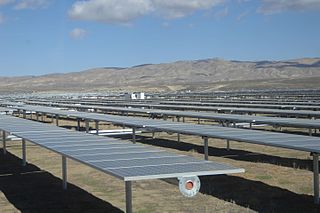
The California Valley Solar Ranch (CVSR) is a 250 megawatt (MWAC) photovoltaic power plant in the Carrizo Plain, northeast of California Valley. The project is owned by NRG Energy, and SunPower is the EPC contractor and technology provider. The project constructed on 1,966 acres (796 ha) of a 4,365-acre (1,766 ha) site of former grazing land. It is utilizing high-efficiency, crystalline PV panels designed and manufactured by SunPower. The project includes up to 88,000 SunPower solar tracking devices to hold PV panels that track the sun across the sky.
SolarReserve was a developer of utility-scale solar power projects which include Concentrated Solar Power (CSP) and Photovoltaic (PV) technology. The company has commercialized solar thermal energy storage technology that enables solar power tower CSP plants to deliver electricity day and night. In this technology, a molten salt is used to capture the energy from the sun and store it. When electricity is needed, the stored liquid salt is used to turn water into steam to turn a turbine and generate electricity.
Solyndra was a manufacturer of cylindrical panels of copper indium gallium selenide (CIGS) thin film solar cells. It was based in Fremont, California. In 2009, the Obama administration co-signed $535 million in loans to Solyndra.
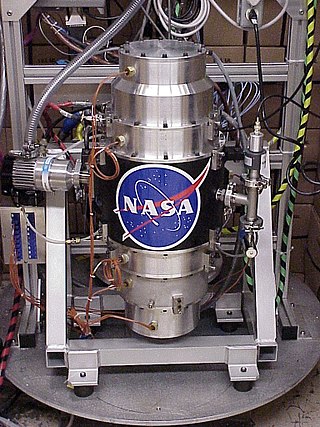
Flywheel energy storage (FES) works by accelerating a rotor (flywheel) to a very high speed and maintaining the energy in the system as rotational energy. When energy is extracted from the system, the flywheel's rotational speed is reduced as a consequence of the principle of conservation of energy; adding energy to the system correspondingly results in an increase in the speed of the flywheel.

The nuclear energy policy of the United States began in 1954 and continued with the ongoing building of nuclear power plants, the enactment of numerous pieces of legislation such as the Energy Reorganization Act of 1974, and the implementation of countless policies which have guided the Nuclear Regulatory Commission and the Department of Energy in the regulation and growth of nuclear energy companies. This includes, but is not limited to, regulations of nuclear facilities, waste storage, decommissioning of weapons-grade materials, uranium mining, and funding for nuclear companies, along with an increase in power plant building. Both legislation and bureaucratic regulations of nuclear energy in the United States have been shaped by scientific research, private industries' wishes, and public opinion, which has shifted over time and as a result of different nuclear disasters.
Solar Trust of America was an integrated solar industrial solutions company founded in 2009 and based in Oakland, California. The company was developing the Blythe Solar Power Project, the largest solar plant in the world in the Mojave Desert, among other projects. The company was noted for having turned down a $2.1 billion loan guarantee by the Department of Energy (DOE) for the construction of the Blythe project. Uwe T. Schmidt was CEO. On April 2, 2012, the company filed for Chapter 11 bankruptcy protection.
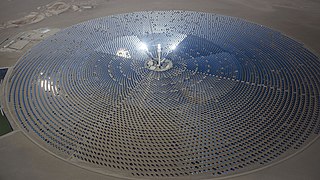
The Crescent Dunes Solar Energy Project is a solar thermal power project with an installed capacity of 110 megawatt (MW) and 1.1 gigawatt-hours of energy storage located near Tonopah, about 190 miles (310 km) northwest of Las Vegas. Crescent Dunes is the first commercial concentrated solar power (CSP) plant with a central receiver tower and advanced molten salt energy storage technology at full scale, following the experimental Solar Two and Gemasolar in Spain at 50 MW. As of 2023, it is operated by its new owner; ACS, and in a new contract with NV Energy, it now supplies solar energy at night only, drawing on thermal energy stored each day.
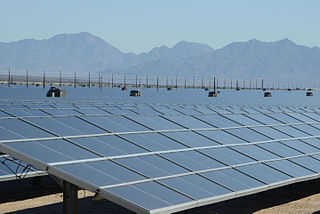
The Desert Sunlight Solar Farm is a 550-megawatt (MWAC) photovoltaic power station approximately six miles north of Desert Center, California, United States, in the Mojave Desert. It uses approximately 8.8 million cadmium telluride modules made by the US thin-film manufacturer First Solar. It has the same 550 MW installed capacity as the Topaz Solar Farm in the Carrizo Plain region of Central California, making both of them tied for the second largest completed solar plants by installed capacity as of fall 2015.
The Agua Caliente Solar Project is a 290 megawatt (MWAC) photovoltaic power station, built in Yuma County, Arizona using 5.2 million cadmium telluride modules made by the U.S. thin-film manufacturer First Solar. It was the largest solar facility in the world when the project was commissioned in April 2014.
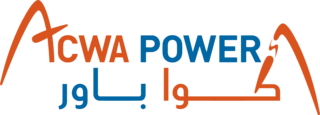
ACWA Power is a developer, investor, co-owner and operator of a portfolio of power generation and desalinated water production plants with a presence in 13 countries across the Middle East, Africa, and central and southeast Asia. ACWA Power's portfolio of projects in operation and development has an investment value of USD 85.7 billion, and a capacity of 55.1 GW of power and 8 million m3/day of desalinated water.
Satcon Technology Corporation was an energy and power company originally based in Cambridge, and later Boston, Massachusetts. Its markets include the utility, hybrid vehicle, ship building, industrial automation, semiconductor processing, and defense.
Younicos was a German-American technology company that developed and sold energy storage systems and control software. The company integrated battery technologies, power electronics and control software to create systems that respond to the energy management requirements of power networks of all sizes, including micro-grids.

A flywheel-storage power system uses a flywheel for energy storage, and can be a comparatively small storage facility with a peak power of up to 20 MW. It typically is used to stabilize to some degree power grids, to help them stay on the grid frequency, and to serve as a short-term compensation storage. Unlike common storage power plants, such as the pumped storage power plants with capacities up to 1000 MWh, the benefits from flywheel storage power plants can be obtained with a facility in the range of a few kWh to several tens of MWh. They are comparable in this application with battery storage power plants.











